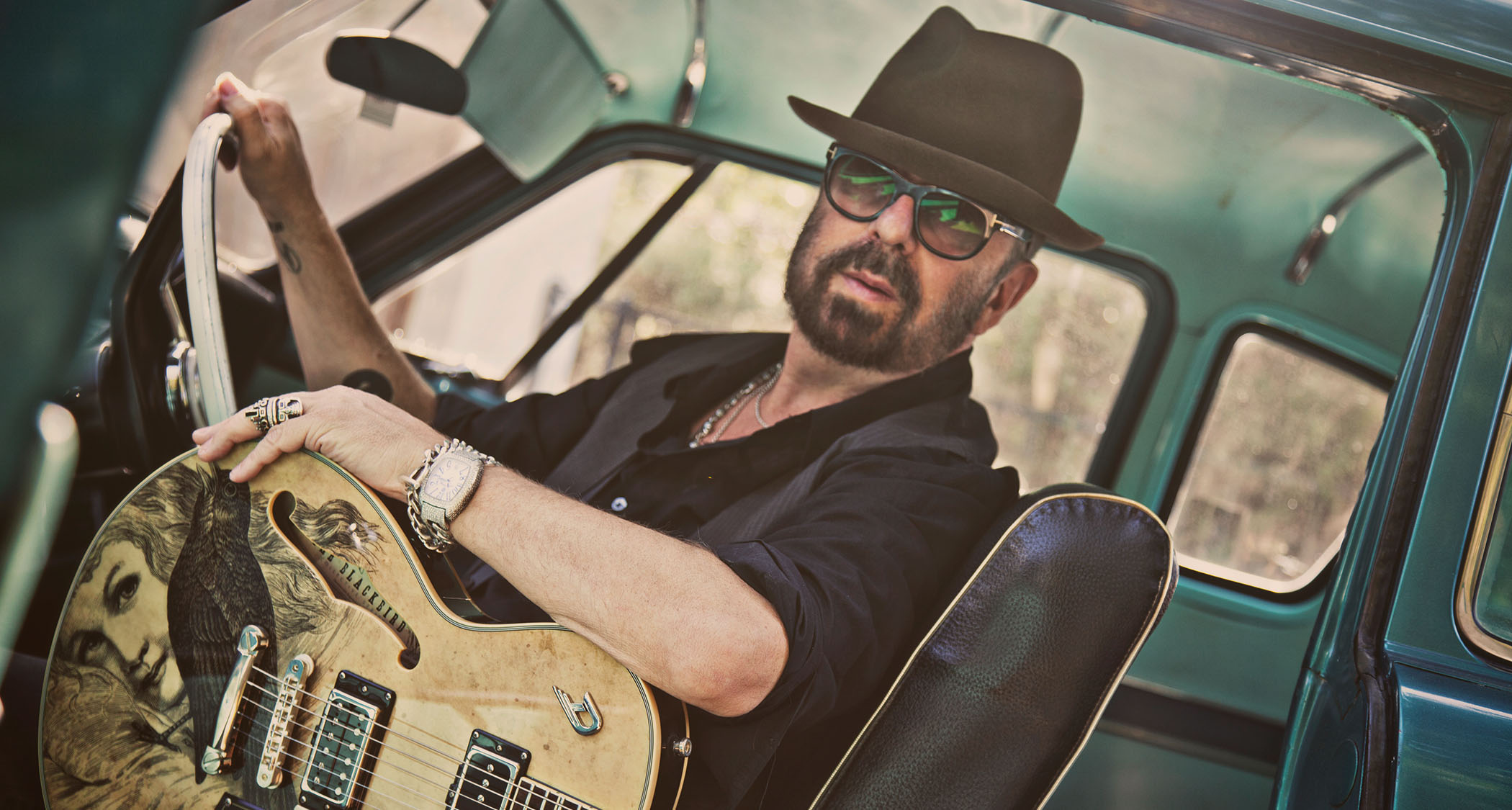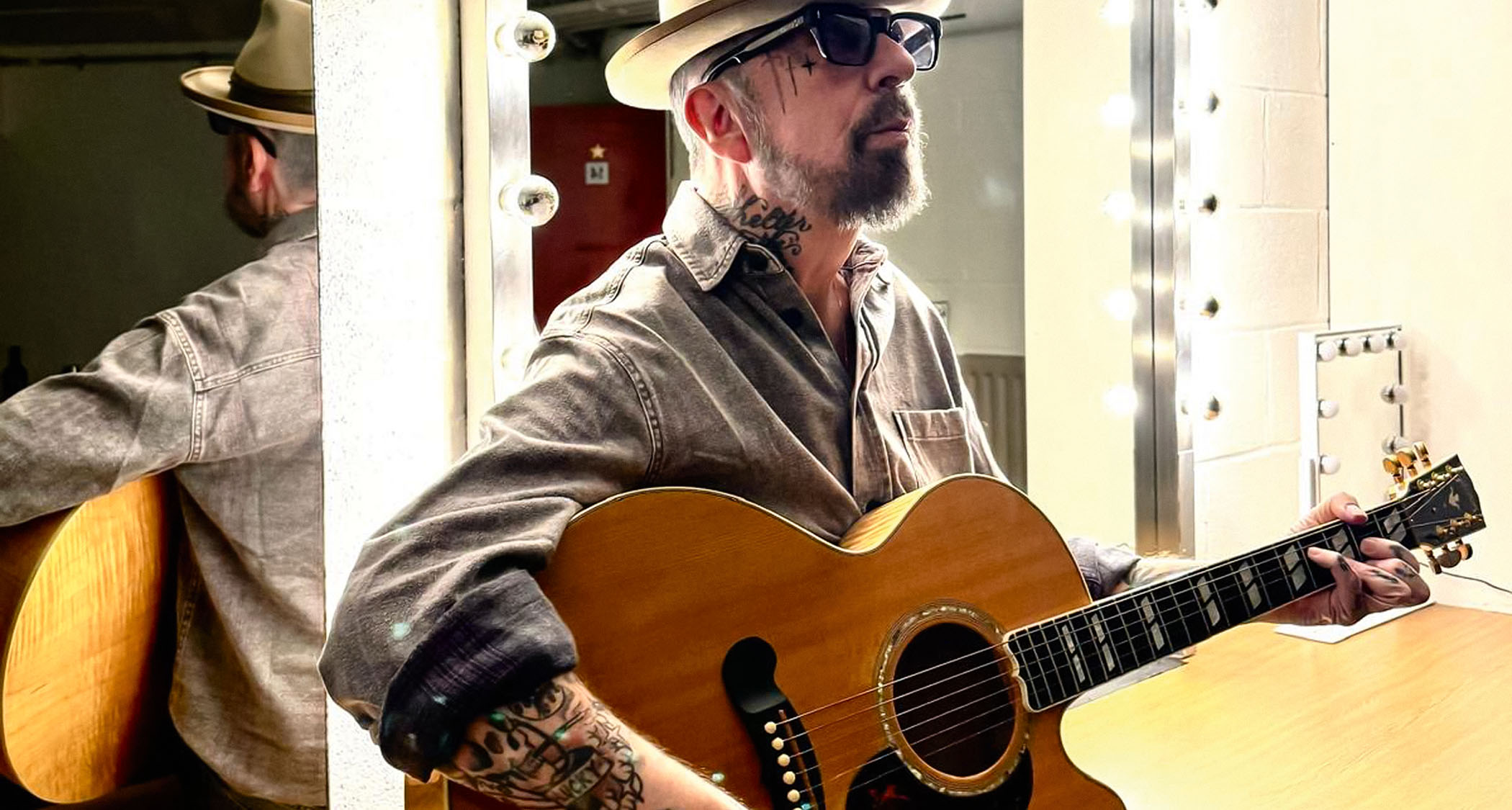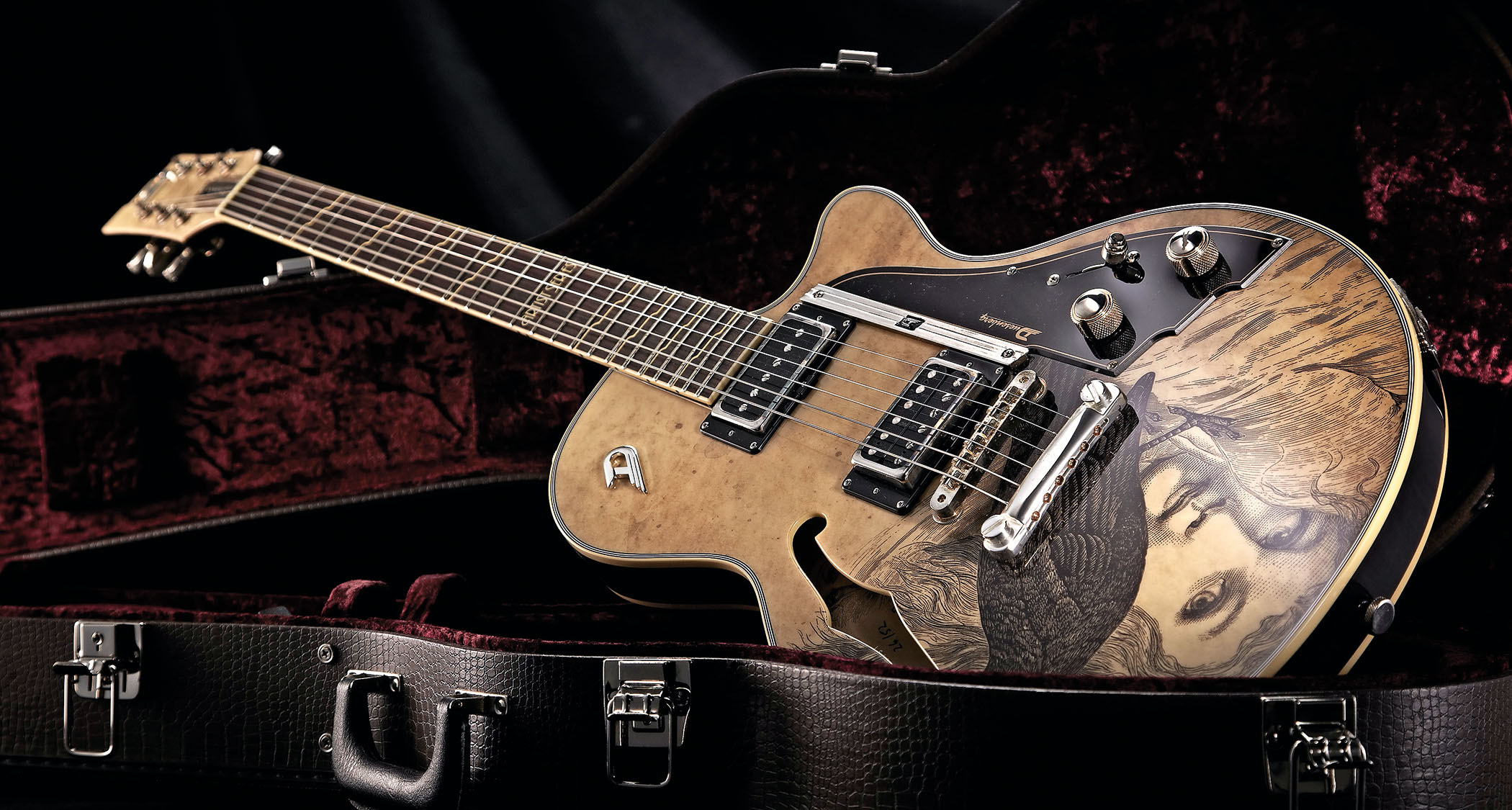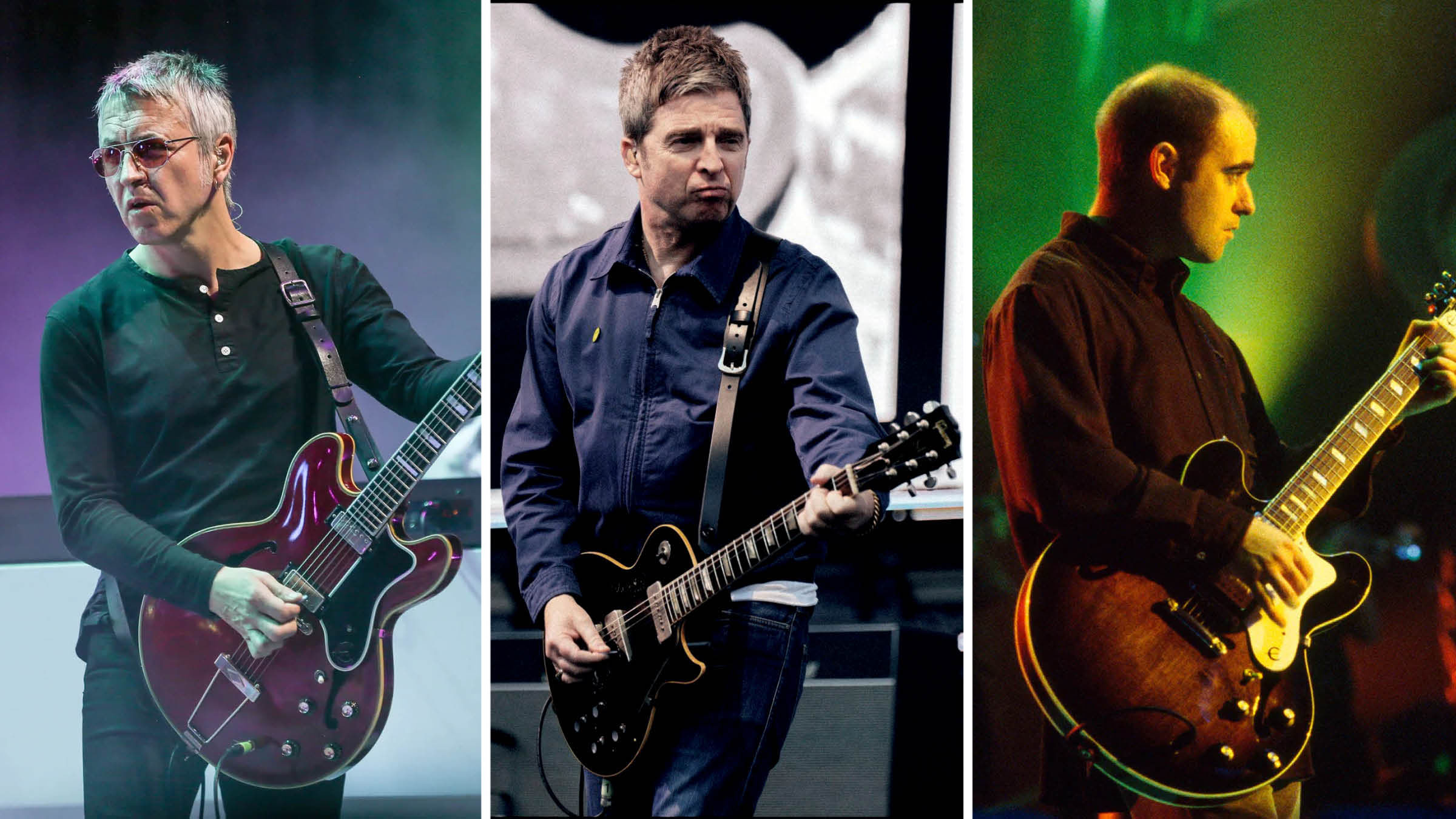“People say Eurythmics are a synth-pop duo, but a lot of those songs started with me playing electric guitar. Even Sweet Dreams is a blues song, really”: Eurythmics legend Dave Stewart on gigging folk clubs underage and drinking sake with Bob Dylan
The Eurythmics legend returns with an album of Bob Dylan covers, a man who he remarkably befriended after a chance phone call

‘Underrated’ seems a strange word to use about a musician who has sold 75 million records. And yet there’s a case that Dave Stewart has never quite received his due as a guitarist. Perhaps this oversight is understandable.
Partnering the androgynous, octave-straddling Scottish vocalist Annie Lennox on Eurythmics’ chart-topping dash through the ’80s would put anyone in the shade. Nor did the multi-instrumentalist Stewart feel the need to constantly flex his guitar chops, driving many of the duo’s biggest hits – like 1983’s icy Sweet Dreams (Are Made Of This) – on synth and programmed drums.
And while Stewart has been hugely prolific as a producer, songwriter and music-industry Swiss Army knife since Eurythmics’ dissolution in the ’90s, he’s never attached himself to another full-time project in quite the same way.
As such, the 72-year-old’s new release – a fantastic collection of Bob Dylan covers snappily titled Dave Does Dylan – is a welcome reminder of Stewart’s generational guitar skills, showcasing his supple fingerstyle and lived-in vocal on songs that take him right back to the start.
How do you feel about Dave Does Dylan? Are you pleased with it?
“Well, yeah, considering I wasn’t even making an album at first. What happened was, whenever I was in a hotel room or whatever – you know, that ‘hurry-up-and-wait’ thing when you’re doing shows – I’d just sing one of the Dylan songs that I used to play in the folk clubs when I was 15.
“There were no amps – every song was just one live take filmed on an iPhone with a couple of mics going into a laptop. All the videos are on Instagram and the album is those actual recordings. I didn’t change anything. So that’s how the album came out sounding stripped bare.
All the latest guitar news, interviews, lessons, reviews, deals and more, direct to your inbox!
“It was about a quarter of the way through posting these things that people started saying, ‘I want to get this as an album.’”
How did you discover Dylan’s music in the first place?
“My brother left me a couple of Dylan albums when he went to college, so that’s what I learnt guitar from. Before that, I wasn’t interested in music. I just wanted to play football for Sunderland. But instead, I had my knee broken by this kid on the football field. That was the same month my mum left my dad, so he was totally depressed. I just remember looking out of the window at these slate-grey Northern skies and thinking, ‘I’m fucked…’
“Then the postman came with this box that my older cousin had sent me from Memphis. Inside was a pair of Levi’s and under that were two blues albums. So now I had my two Dylan albums and these US blues records – I think one of them was Robert Johnson. And when I switched on the radio that day, it was The Kinks with You Really Got Me, followed by The Stones, The Who, The Beatles. I was like, ‘Holy shit!’
“So I tried to learn it all. I remembered that my brother had a guitar with about five strings on it in his wardrobe, so I hobbled to his room and got it. I didn’t have a tuner, but I learnt some two-note blues riffs. But when my brother came back from college, his mate said, ‘It’s not tuned right.’ So he tuned it all normal. And I went, ‘Oh, fucking hell’ because I couldn’t play the thing again!”
Could you tell us about when you were playing Dylan on the Sunderland folk circuit?
“They wouldn’t let me in for ages. I was about 12, so I’d stand out on the street playing until the really lovely guy who ran this folk club – called The George And Dragon – eventually let me in. I had to stand at the back until he says, ‘This kid has been standing outside in the cold every week, let’s give him a chance.’
“The first two songs I sang were To Ramona and Don’t Think Twice, It’s All Right. My voice had broken, but I looked like a tiny kid. The songs they were singing in that club were things like Shipbuilding, y’know, old English folk accompanied with the hand over the ear. So they didn’t really know these Dylan songs and they were a bit taken aback. But the guy allowed me to come back.”

“All the pubs realised that folk music brought people in to drink. I remember one club just outside Sunderland. I went along with my guitar and there was just one guy drinking his pint in front of these four crates that had been put together for a stage. I didn’t care, I just wanted to play, so I got up and this sweet guy was clapping on his own.
“But as I was singing the second song, I had my eyes closed and I felt this tapping on my hand. It was the guy. He goes, ‘I’m sorry, son, but I’ve got to catch me bus.’ He probably didn’t know what to do because I was probably singing a Dylan song with 30 verses.”
Dylan is sometimes accused of just being a campfire strummer. Do you rate him as a player?
“You listen to any of the early albums, most guitarists, no matter who they are, if you say to them, ‘Well, go on then, fingerpick that Dylan song and sing at the same time’ – it’s not easy. We both love Mississippi John Hurt and older blues guys like that. When he’s playing electric, he likes things to be kind of raggedy on purpose.
“But if you see him play Like A Rolling Stone, his guitar playing is great; it’s just that he’s unpredictable. I was great friends with the Heartbreakers. They were on tour with him, and they said he’d suddenly play the song in a different key, or he decides to miss out a verse.”

You became friends with Dylan too, didn’t you?
“The story is nuts because, having been such a fan, in 1985 I was in the studio with Feargal Sharkey. He went out and I was sat in the control room when our receptionist rang through and said, ‘Bob Dylan’s on the phone for Dave Stewart.’ I thought it was just Feargal larking about.
“Anyway, when I picked up the phone, it was one of those voices that nobody could imitate. That night, we met up, had a meal, drank sake. Later, when he came to England, we’d be sitting around my kitchen table. It just slowly became normal.
“I’ve been on stage with him a few times. I’ve got this great film of us in Tokyo. I’ve got this tiny video camera and I’m about 12 inches away from his face as he’s singing Like A Rolling Stone. When it gets to the chorus, I swing it round to the audience and all these Japanese people scream: ‘How does it feel?’ Amazing.”

How did you decide which acoustic guitar to use?
“It depended on where I was. I think there were about seven guitars on the album. I used a tiny 12-string miniature called a Maton on Shelter From The Storm. I used this Martin Custom Shop, which is made using wood from the bottom of a ship that sank in the 1800s.
“There was a tiny Gibson LG-2 parlour guitar. And then I used my blue Takamine that I bought in the ’80s. I played that on just about every Eurythmics tour. It’s almost got a hole through it now, like Willie Nelson’s Trigger.”
Do you play more acoustic guitar than people realise?
I always just sit with an acoustic guitar, noodling about, and often with a slide, playing some blues
“Yeah, at the end of the day, I always just sit with an acoustic guitar, noodling about, and often with a slide, playing some blues. It feels very natural for me to do that. And I never went away from that, even all through the ’80s synthesizer period. People would say, ‘Oh yeah, Eurythmics, they’re a synth-pop duo.’ But, actually, I would write on whatever the song required.
“A lot of those songs started with me playing electric guitar and making a riff, like Would I Lie To You?, Missionary Man or Thorn In My Side. Even Sweet Dreams is a blues song, really. It just stays on this groove, it hardly changes.
“That’s why the label didn’t put it out until the fourth single. They said, ‘We don’t understand, where’s the chorus?’ I’ve played it before with electric guitar and slide and somebody singing it like a blues song. And then, obviously, Marilyn Manson really changed it.”
What were the core guitars you used with Eurythmics?
What’s really nuts about when you become a famous artist is that you’ve been broke and living in a squat – and now you’ve got money and people are giving you things
“That blue Takamine was very important because Annie and I would often do an acoustic set, although I used a Guild F412 from 1974 on Thorn In My Side. I’d also use Fender Strats. But there were different periods of Eurythmics. It depended how much money we had. Because when you get a record deal, you don’t instantly get money – you wait ages. And when you play live, you’re losing money at first.
“But what’s really nuts about when you become a famous artist is that you’ve been broke and living in a squat – and now you’ve got money and people are giving you things. It’s like, ‘I wish you could have given me that before.’ My silver Strat is what I use now for Eurythmics songs. I also have an amazing Duesenberg signature guitar called the Blackbird – it’s beautiful.”
Do guitars still excite you? What would happen if we were to walk down Denmark…
“[Interrupting] Don’t let me walk down Denmark Street!”
- Dave Does Dylan is out now via Surfdog.
- This article first appeared in Guitarist. Subscribe and save.
Henry Yates is a freelance journalist who has written about music for titles including The Guardian, Telegraph, NME, Classic Rock, Guitarist, Total Guitar and Metal Hammer. He is the author of Walter Trout's official biography, Rescued From Reality, a talking head on Times Radio and an interviewer who has spoken to Brian May, Jimmy Page, Ozzy Osbourne, Ronnie Wood, Dave Grohl and many more. As a guitarist with three decades' experience, he mostly plays a Fender Telecaster and Gibson Les Paul.
You must confirm your public display name before commenting
Please logout and then login again, you will then be prompted to enter your display name.







